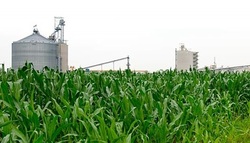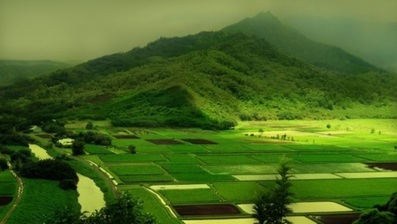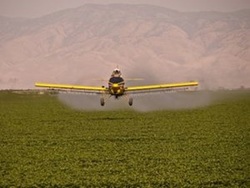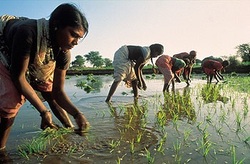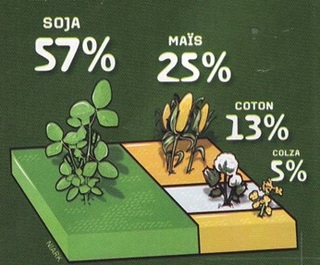-
Accueil
We are a french european class in Lycee St Marc at Nivolas Vermelle (Isère - France)
With our teachers (Mrs Barret, English teacher and Mrs Bardin, history and geography teacher ), we worked on "How to feed the world ?" in DNL.
These are our products without any teachers correction.
We started our work with this video "How to feed the world, a film directed by Denis Van Waerebeke for the "Bon appétit" exhibition.
after we did researches and wrote articles.
So now, good read !
-
Par 2nde10 le 14 Février 2016 à 17:15
All you need is food...
The food inequalities.
Up to now the world is full of inequalities. Indeed, there is a huge difference between the south and the north hemisphere. The south countries must struggle against the hunger while the north countries eat more than theirs’s fill and risk the obesity.
 1 commentaire
1 commentaire
-
Par 2nde10 le 14 Février 2016 à 17:36
article by Lazzarotto Anaïs and Fourt Enola
Source:https://myc4.files.wordpress.com/2011/07/green_revolution.jpg
The Green Revolution is the increase of the agricultural yields in a country caused by a progress in agriculture between 1960 and 1990. This progress was brought by the use of GMOs, massive irrigation, intrants and fertilizers. Even if it has major advantages such as allowing countries to become self-sufficient, it still has important drawbacks that we can ‘t ignore, as the pollution and the exhaustion of grounds and water, or the destruction of environment. In this article, we will especially get interested in the Indian Green Revolution. We will also study what is the Evergreen Revolution.
Source: http://www.scidev.net/objects_store/thumbnail/F84459B8AAD4CEB034BE5592810AC5AC.jpg
THE INDIAN GREEN REVOLUTION
• The Green Revolution in India refears to a period that began in the 1960’s when the agricultural yields of India increased strongly because of the use of inputs and fertilizers, massive irrigation and GMO crops, added to the introduction of the latest agricultural techniques.
•The State of India came to the decision to collaborate with the chimical firms that furnish inputs and GMOs to help the country becoming self-sufficient, and stop alimentary insecurity. This decision worked because the yields of Indian agriculture had greatly increased, but the progress in agriculture brought with it the major drawbacks of the Green Revolution.
The Advantages
• The Green Revolution is a real advance for Indians, it reduces starvation and helps farmers gain more incomes.
• The country became auto-sufficient thanks to it so India isn’t dependent on other countries to import its food anymore. Indian can feed its population with its own production.
• GMOs brought by the Green Revolution can be grown more easily by farmers as they less undergo the damages caused by wind, diseases or insects, and they produce bigger productions. Add on, GMOs can produce more than regular crops on the same plot of land.
• The Green Revolution had multiplied the number of crops throughout the year : instead of one crop in the year, one or two more crops can be grown on the same soil. This phenomenon is called the multiple cropping.
• The increase of agricultural yields led to lower prices on markets and reduction of production costs : food is more accessible to Indians.
Source :http://borgenproject.org/wp-content/uploads/Africa-needs-green-revolution.-530x298.jpg
The Drawbacks
• The Green Revolution causes an agriculture that is way too intensive, the monoculture and the inputs exhaust and pollute the ground.
• The massive irrigation dry out the ground water, and lead to salinization ( so to the destruction) of the soils.
• The pesticides cause pollution and erosion of the ground.
• The intensive agriculture, and especially its mechanization, consummate a lot of energy.
• One of the consequences of the Green Revolution is the destruction of the biodiversity.
• An augmentation of diseases passed by mosquitos.
• The Green Revolution causes deforestation : as grounds are more and more exhausted, farmers need other lands to grow their seeds on, so they clear of trees to make new cultivable lands.
• The Green Revolution contribute to global warming.
Because of all of this, the threat of alimentary insecurity risks to come back : if all the Indian grounds get exhausted, the country will not be able to produce its own food anymore.
Source : http://www.motherjones.com/files/imagecache/master-image-main/cropdust2.jpg
THE EVERGREEN REVOLUTION
• The Evergreen Revolution is an agricultural and ecological revolution that has as main objective increasing even more the yields of Indian agriculture, but thanks to ecological agriculture and green technologies, which would avoid ecological and social damages. It would help India becoming one of the world’s food supplier and consequently increase economical yields of the country. There are other advantages like helping increase the small producer’s incomes, or reducing pollution caused by inputs. It would also limit the consommation of ressources such as water, and the exhaustion of grounds caused by massive irrigation.
• The Evergreen revolution only commercializes on local markets products from small Indian farmers ; no inputs are used as the crops are ecological and there isn’t only one variety of agricultural product by crop. The green crops promoted by Evergreen Revolution make good use of ecosystems itselves : using additonal plants helps preserving nutrients from the ground to avoid it being exhausted. Add on, these agricultural crops only use the strict quantity of water necessary for the plants, it helps preserving the ground water.
• The main difficulty for the Evergreen Revolution is to produce as much as the regular crops on which we use fertilizers, inputs and irrigation, without all of this and the minimum of water. It is also a problem to persuade farmers to forsake inputs, pesticides and irrigation to try a brand new agricultural technique.
• The Evergreen Revolution is a solution for durable agricultural prosperity, but it will be hard to put in place.
Source :http://assets.sgiquarterly.org/assets/images/Jly2009/11.jpg
• Links to related sites
◘ http://study.com/academy/lesson/what-is-the-green-revolution-definition-benefits-and-issues.html
◘ http://english.manoramaonline.com/news/columns/straight-talk/india-needs-an-evergreen-revolution.html
◘ https://en.wikipedia.org/wiki/Green_Revolution
◘ http://www.encyclopedia.com/topic/Green_Revolution.aspx
 votre commentaire
votre commentaire
-
Par 2nde10 le 14 Février 2016 à 17:44
Article by Alizee, Caroline, Clemence, Laurine
A genetically modified organism is an organism in which has been artificially introduced one or several genes. These genes could be unknown for the species from which belongs this organism, or could belong to the species but having undergone several genetic manipulation. The introduction of these genes leads to the production of proteins, which attribute news characters to the genetically modified organism.
The GMO interest is in the properties that we could bring to them and which aimed to improve the cultivation of plants or its nutritional qualities. The most present genes in the GMO are to resist an antibiotic, a weed killer or a toxin.
The GMO history started almost 40 years ago with the first transformed bacterium in 1973. The first vegetal genetically modified, or transgenic, appeared in 1983. The GMO represent today an important issue in our society. Indeed, if the GMO advantages are clearly visible, the risks are still unknown by the population. However, a strong growth is expected to the next years. The nutritional characteristics of crops will be more and more modified (for example, the increase of Vitamin A in the rice). It is important to consider our GMO consummation and to put in place some security and detection devices as long as we will not know the GMO consequences on the Human and on the environment.
GMO repartition

United states of america is the first country to use more GMO on the world (50%). Argentin use 17% , it’s the second country following by Brasil with 13%. India use only 6 % of the GMO ressources of the world like Canada. China compose 3% of the GMO ressources. The 5% restant come from other countries.
GMO creation

a) Vegetal GMO creation :
· - Direct method: the direct gene transfer is realized thanks to the introduction in DNA of a gene of interest, conveyed most of the time by a plasmid with physico-chemical methods.
- The microinjection
- The biolistique
- The technique of liposomes
- The electrolocation
Indirect method: this method use pathogenic agents such as viruses or bacteria. The most often used vectors are the agrobacteria: Agrobacterium tumefaction’s (responsible of the gall and crown gall.
The biological transfection.
Animal GMO creation
The micro-injection technique is often use to obtain transgenic or genetically modified animals. With the aids of an extremely fine needle, we inject a solution of DNA molecules, which contains the genes conferring the desirable characteristics, as the disease resistance. The genes are incorporated into the animal cell genome so that the cells start to show the characters determined by the new gene. This micro injection technique could be precious in agriculture.
c) Création d'une bactérie OGM :
In certain bacteria, we find small natural circular segments of DNA called plasmids, which can be used in genetic. The Plasmid DNA can be easily removed from the bacterial cell, modified by the addition of a new gene, reinserted in the cell. Equipped with the new gene, the bacterial cell can make the product of this gene as if it was its. As bacteria reproduce very fast, it is possible to use strong concentration of bacteria carriers of the modified plasmids and to produce commercially significant quantities of genic product, for example a food additive or an animal vaccine.
Advantages and disadvantages at different scales
a) Advantages
· At the level of the medicine
- Transgenic animals produce medicines
- Transplanting animal organs into human beings
- Vaccines without stings
- The production of molecules (insulin, growth hormones)
· At the level of agriculture
- The GMO plants can resist the devastating by the production of their own pesticide
- Allow a faster development of plants and animals
- Improve the nutritional value and the gustative qualities of food
- GMO resist the extreme weather conditions
- Reducing of the losses of production
- Their production cost is less compared with the biological cultures
- We could also reduce the risk of allergy to food as peanut or walnuts.
b) Disadvantages
· at the health level
- The GMO plants are not enough controlled before the product is on the market.
- The plants which can resist to weed killer are watered with weed killer and are then consumed by animals and the man arrives at the end of food chain.
- Food alergies were noticed with GMO
· at the environemental level
- Weed killer pollute soil and it is necessary to increase the use of weed killer since weed become resistant.
- GMO are a threat towards the biodiversity Because the pollen can contaminate not GMO plants and the natural stumps could disappear definitively
· GMO study perform
Terje Traavic, Molecular biologist of the Institute of genetic ecology, says that « one of the major risks is that 95% of the scientists work for the company and only 5% are truly independent.
In 2007, a 3 mouths study led by the CRIIGEN reveals 60 significant differences between rats, which consumed genetically modified corn, and the rats of the witness group. The differences affect loins, brain, heart, liver and weight of animals. These reports, " could be forerunners of toxicity, " asserts Greenpeace
Conclusion
Today, the transgenesis is a new technique, which raises numerous questions.
In spite of the several advantages that it presents, it also has lots of important risks, which are often badly known by the scientists. Several years would be needed before knowing the real impact of GMO on the environment and the consumers. Indeed, even the scientists are disagreeing with regard to the evaluation of GMO before their sale. Lots of time will be necessary before non-hazardous GMO are developed and maybe even more time before the acceptance of its by the population.
For the moment, tests must be doing because those of today are too weak. Before that, we must not commercialise GMO, but in the same time, we shouldn’t destroy the fields cultivated under greenhouse: it is necessary to determine if the GMO are dangerous or not.
So, it is necessary to let the scientists continue their research in order to develop non-hazardous GMO, which could improve the life of world population.
It is also important that these GMO are profitable for everyone, not only for the large company as Monsanto, but also to the farmers and population of the third world. Indeed, even if the advantage that we could feed the entire world and mostly the population developing countries with GMO is often cited, this one is not sincere in fact, as we saw it.
 1 commentaire
1 commentaire
-
Par 2nde10 le 24 Février 2016 à 20:29
Inputs are products which are not naturally in the ground. Chemicals products are often used because they present lots of advantages. But they have many bad results, so a lot of dangers. Why do we use inputs if there are so many dangers? And which are those drawbacks?
 1 commentaire
1 commentaire
-
Par 2nde10 le 25 Février 2016 à 22:18
Food aid programs constitute to give alimentary resources for people in need. Food aid programs can be brought by associations, individual person or states of population in malnutrition.
 votre commentaire
votre commentaire Suivre le flux RSS des articles de cette rubrique
Suivre le flux RSS des articles de cette rubrique Suivre le flux RSS des commentaires de cette rubrique
Suivre le flux RSS des commentaires de cette rubrique
